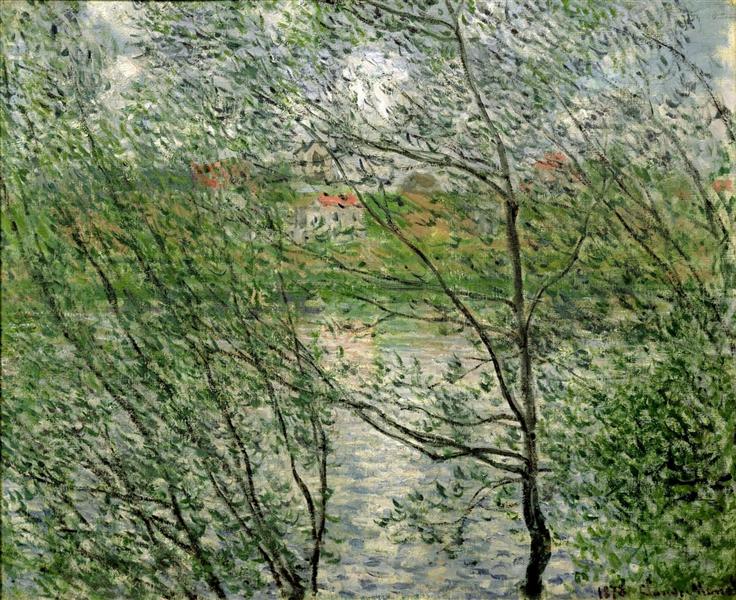Description
The work "The Grande-Jatte Island in Siene" by Claude Monet, painted in 1878, encapsulates the essence of impressionist painting and, at the same time, reflects one of the most significant stages in the artistic search of the artistic search for master French. This painting, Although less known than his counterpart "On Sunday afternoon on the island of the Great Jatte" by Georges Seurat, he presents a less structured weak approach than machine an atmosphere of serenity as life evokes outdoors.
Monet is recognized for its ability to capture the variations of light and color, and in this composition, the soft tones of green and blue dominate the palette, creating a space of tranquility. The light is filtered through vegetation, generating a game of lights that gives life to trees and water, and in which each brushstroke seems to be imbued with movement. The river blues and the green of the island harmonize, offering a beautiful contrast to the clouds that, although subtly present, add an ethereal dynamic at the top of the work.
The composition presents a subtle balance; The island occupies a central place that is framed by the Serpenteante River, where the reflexes of the light on the water provide a touch of elegance. This compositional approach, which seems to be influenced by the practices of other Monet contemporaries, highlights the connection between the environment and the spectator, a conductive thread in the impressionism that Monet would prolific in his career prolific.
When analyzing the characters, several human figures dispersed in the scene can be glimpsed, although they are not the central focus of the work. These figures, which include both men and women, are represented in daily activities, suggesting a social and recreational life on the riverbank. However, being secondary elements that flow within the landscape, they play another role in the general atmosphere of tranquility than in the narrative of the painting.
One of the most fascinating characteristics of "the Grande-Jatte Island in Siene" is its place in the context of the art of the late nineteenth century. Monet, as a pioneer of impressionism, sought to free himself from the restrictions of academicism and, in this work, we can observe his concern for the transience of the moment and the capture of the ephemeral. Through this work, he not only conveys a moment in time, but also offers us a contemplation on the constant interaction between nature and the human being. This synergy is a recurring theme in many of his works, as in "Impression, Rising Sun" or "Los Nenúfares", where water plays a fundamental role in sensory experience.
In conclusion, "the Grande-Jatte Island in Siene" is a work that, despite its minor renowned, encloses Monet's mastery in the use of color, light and composition. It invites us to explore a serene moment of the French landscape, while reflecting on the interrelation between nature and the human being. It is, without a doubt, a visual trip to the very essence of impressionism, where everyday life is intertwined with the poetics of light and color.
KUADROS ©, a famous paint on your wall.
Hand-made oil painting reproductions, with the quality of professional artists and the distinctive seal of KUADROS ©.
Reproduction service paintings With a guarantee of satisfaction. If you are not completely satisfied with the replica of your painting, we refund your money 100%.

